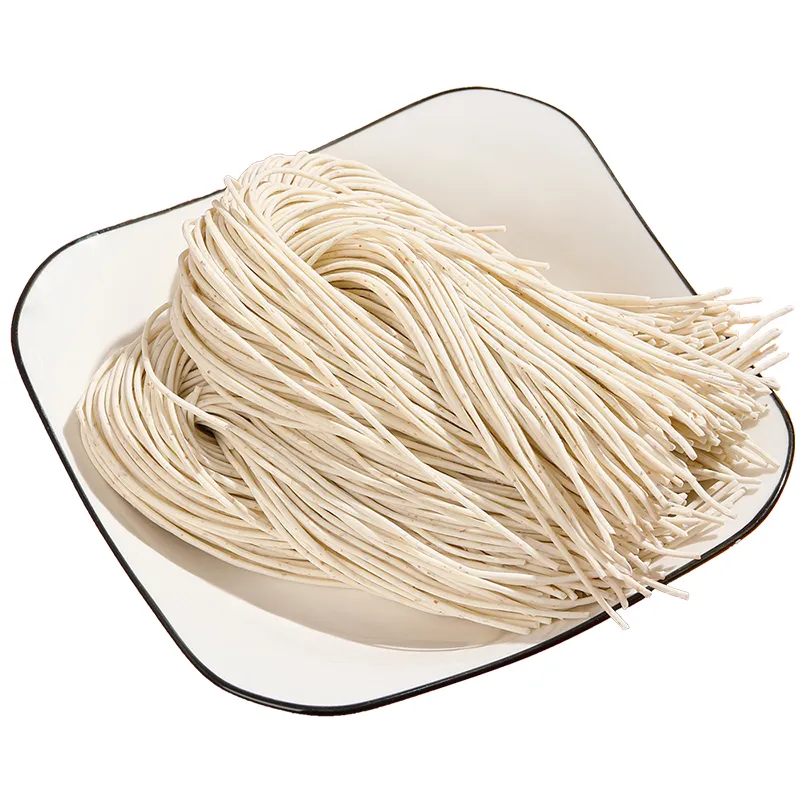Comparison of Soba Udon and Ramen Noodles Their Key Differences Explained
The Differences Between Soba, Udon, and Ramen Noodles
When it comes to Japanese cuisine, few dishes are as popular or as cherished as noodle dishes. Among the plethora of options, three types stand out soba, udon, and ramen. Although they may seem similar at first glance, each type of noodle has distinct characteristics that set them apart, from their ingredients to their preparation methods and cultural significance.
Ingredients
The primary distinction between soba, udon, and ramen lies in their ingredients. Soba noodles are made from buckwheat flour. This gives them a nutty flavor and a slightly darker color. They may also contain some wheat flour, but true soba is predominantly made of buckwheat. This makes soba a good option for those looking for a gluten-free alternative, although it’s important to check labels, as many soba noodles do contain wheat.
In contrast, udon noodles are made primarily from wheat flour, water, and salt. They are thick and chewy, with a smooth texture that can be quite satisfying. The process of kneading and rolling gives udon its characteristic width and density.
Ramen noodles, on the other hand, are made from wheat flour as well, but they are uniquely characterized by the addition of kansui, an alkaline mineral water. This ingredient gives ramen its springy texture and yellow color, which distinguishes it from udon and soba. Kansui also helps the noodles maintain their shape when cooked in broth, allowing them to absorb flavors without becoming mushy.
Texture and Shape
The texture and shape of these noodles also contribute to their uniqueness. Soba noodles are typically thin and long, often resembling spaghetti, which allows them to be served chilled or hot in various dishes. When served cold, soba is often accompanied by a dipping sauce and vegetables.
difference between soba udon and ramen noodles

Udon noodles are much thicker and chewier than soba, with a round shape that can vary in width. They are often served in hot broth, making them comforting during colder months. The thickness of udon helps it to hold onto sauces and broth, making each bite even more satisfying.
Ramen noodles are more variable; they can range from thin and straight to wavy and thick. Their design is specifically catered to carry different types of broth, enhancing the overall flavor of the dish. Each type of ramen noodle is optimized for its accompanying soup and toppings, which creates a delightful symphony of textures.
Culinary Uses
Culinary uses also differentiate the three noodle types. Soba is historically significant in Japan, representing health and longevity. It is often served cold during the New Year’s celebration and is enjoyed with various dipping sauces. Soba can also be incorporated into salads or served in broth, showcasing its versatility.
Udon is primarily found in various Japanese soups, particularly in regional dishes. It pairs well with vegetables, tempura, or meat. Udon can be enjoyed in both hot and cold variations, making it a flexible choice for any season. Popular dishes include “kake udon,” which features hot broth, and “zaru udon,” served cold with a dipping sauce.
Ramen has surged in popularity worldwide, particularly with the rise of ramen shops. There are numerous regional variations, from Tonkotsu (pork broth) to Shoyu (soy sauce) and Miso ramen. Each region in Japan has its unique twist on ramen, often characterized by the broth, toppings, and noodle style. The cultural phenomenon surrounding ramen has led to creative interpretations, often incorporating international flavors and ingredients.
Conclusion
In summary, while soba, udon, and ramen all fall under the broad category of Japanese noodles, they each possess unique qualities that cater to different culinary experiences. Their distinct ingredients, textures, and cultural significance create a rich tapestry within Japanese cuisine. Understanding these differences enhances not only appreciation for these beloved dishes but also the ability to enjoy them in various preparations, whether at a local restaurant or made lovingly at home. Whether you favor the nutty tones of soba, the thick chewiness of udon, or the diverse flavors of ramen, each offers a delightful experience that is deeply rooted in Japanese heritage.
-
Is Whole Wheat Pasta Healthy?NewsMay.30,2025
-
Are Soba Noodles Good for Weight Loss?NewsMay.30,2025
-
Are Buckwheat Soba Noodles Healthy?NewsMay.30,2025
-
Are Buckwheat Soba Noodles Gluten Free?NewsMay.30,2025
-
Are Buckwheat Noodles Good for You?NewsMay.30,2025
-
A Healthy Way to Savor Soba and Spicy FlavorsNewsMay.30,2025
-
What Are Lanzhou Noodles?NewsMay.30,2025
Browse qua the following product new the we

















































































































